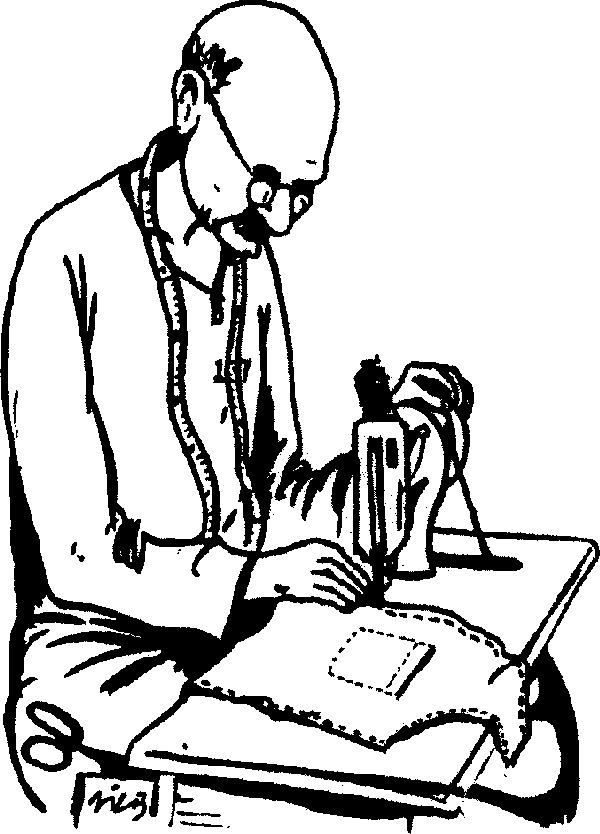

3. Tailor |

In South Africa, Gandhi was twice penalized with hard labour. For some weeks, he had to sew pieces of torn blankets and cut shirt pockets from thick cloth for nine hours a day. He finished tagging the pieces given to him before time and asked for more strips. IN The Indian jail too, for some more days, he worked on a Singer Sewing Machine. It was all jail work done by him voluntarily. Gandhi wanted to grow efficient in the use of a sewing machine. He disapproved of the use of big machines that replace the working hands and make man a slave of the machines owned by capitalists. He believed that a machines must not be allowed to displace necessary human labour. The problem in India was not how to find leisure for the millions but how to utilized their idle hours. He made an exception of the sewing machine because " It is one of the few useful things ever invented. Singer saw his wife laboring over the tedious process of sewing and seaming with her hands and simply out of his love for her, devised the sewing machine in order to save he labour. The machine had love at its back" Gandhi once wrote to a female ashramite: " don't you worry over the tailoring of your dress salwar and kameez. Whatever has to be prepared can be prepared by me. We can easily borrow a Singer sewing Machine. A few hours work should a make the necessary dress." He had every reason to be proud of his needle work. He could cut and stitch his wife's blouses. He spun yarn on a charkha, wove it on a handloom and sewed his own kurta. Expert tailors and shoe-makers gave free lessons to the ashram trainees. when Gandhi was guiding the Champaran ryots in resisting the indigo planters' tyranny a British journalist maligned him. He said that in order to win the ryots. Gandhi temporarily and specially adopted the national dress. Gandhi wrote in reply: " having taken the vow of Swadeshi, my clothing is now entirely hand woven and hand -sewn by me or my fellow workers." Gandhi later gave up the use of kurta and wore a loin-cloth and a wrap. Even then, at times, he hemmed the borders of his handkerchief, napkin or loin-cloth. When he was kept busy in sewing, he dictated letters to his secretary. During his detention in the Aga Khan Palace, he gave khadi handkerchiefs as birthday present to the jail superintendent. Each handkerchief bore the initials of the superintendent neatly embroidered by Gandhi who was then 74. Under his direction, a lady once had to do patch-work with suitable pieces of khadi on favorite shawl of Gandhi. As a representative of his poor countrymen, he sat at the Round Table Conference beside the British Prime Minister and attended a tea party at the Bucking ham palace with that shawl on. He never cared for show, but detested a shabby, torn dress. Once in a meeting, he notices a hole in the wrap of co-worker. Immediately he sent this note to him: " To wear torn clothes is sign of laziness and, therefore, shame. but to wear patched clothes proclaims poverty or renunciation or industry. I could not appreciate the rent in your chaddar. it is not a sign of poverty or simplicity . It is a sign of no wife, bad wife or laziness." |